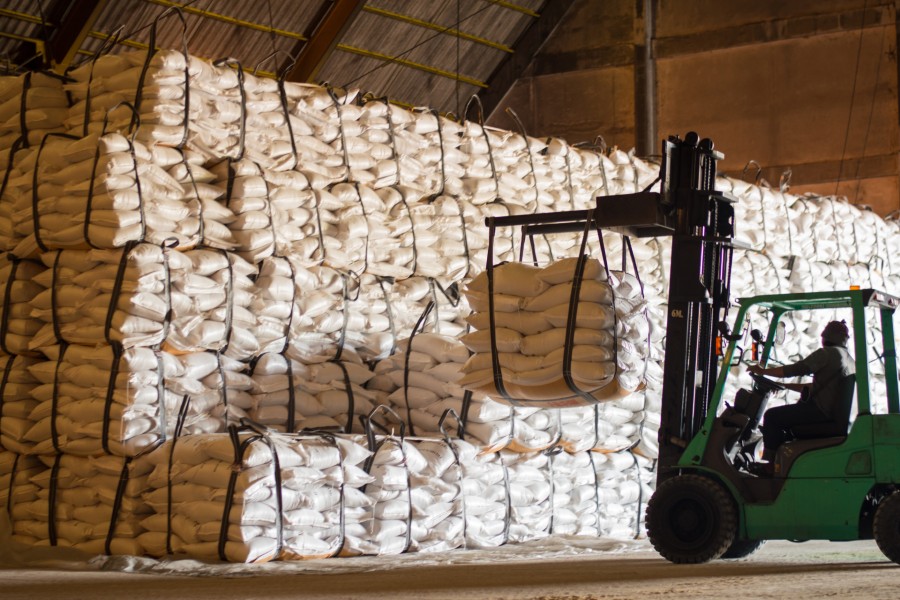The Key to Maintaining Food Safety during the Pandemic is Clear Communication
By Judy Sebastian
As 2020 unfurled, so did the optimism, confidence and motivation of people around the world. Leaders from various countries were gearing up to make 2020 a year worth remembering; it was supposed to be the year professionals exchanged success stories in the field of science, technology, medicine, culture, supply chain, and other avenues. Instead, we are faced by the unpredicted and unplanned reality; the beginning of a new normal due to the COVID-19 pandemic.
With fluctuating numbers of reported COVID-19 cases, it is challenging to predict when the “curve will flatten” and stay that way. Everyday activities have been impacted, and certain businesses have been forced to close their doors indefinitely. In the United States alone, it is estimated that the “Coronavirus related job losses could total $47 million, and the unemployment rate may hit 32%”. Food safety related activities for suppliers, distributors and consumers have been impacted as well. From entry level associates to executives, food industry professionals are learning how to work closely with other functions, such as IT, logistics, transportation, healthcare, and to some extent, relief workers. Here are some ways to manage food safety in the pandemic age, with a human-centric approach.
The difference between a calm and a chaotic response to a crisis lies in how communication works within an organization
Set up a flexible crisis management team
Considering the human-to-human transmission pathways of COVID-19 and how some individuals can remain asymptomatic, the proactive approach to setting up an emergency response or crisis management team would be to ensure that it is a flexible one. This can be achieved by nominating members across functions, departments and varying levels of management. Having a healthy mix of team members from operations and senior leadership would enable the team to consider multiple facets of the business, while executing a plan of action. It would be an added benefit to the business to ensure that all data pertaining to the crisis management strategy is housed at an easily accessible virtual location. This would also save support team members valuable time when trying to stay up to date while filling in for core team members.
Establish the emergency chain of command
In the event that crucial business decision makers are impacted, have a documented emergency chain of command with clear communication channels already established to ensure that designated individuals are authorized to fill in.
Review existing communication channels
The difference between a calm and a chaotic response to a crisis lies in how communication works within an organization. A few key points to consider when developing a crisis communication strategy are:
a) Ensure the language is simple, clear, inclusive and to the point. Pay close attention to tonality and the choice of words. A little known fact is that Maria Van Kerkhove, WHO’s infectious disease epidemiologist, corrected the usage of the term “social distancing” to “physical distancing”. Unfortunately, it is the former that caught on, and is still widely used in communications around the world.
b) Have a well-defined message for the associates, middle managers, senior leadership and customers. Consider adding notes such as which team or department to contact in case the employees are contacted by the press or customers.
Apex Food Consultants, a Dubai-based food safety consulting firm, helped its clients develop a customer journey map to identify key food safety touch points. The organization’s founder and Managing Director, Ms. Alphonsa Sebastian explained, “It was important for us to develop focused risk management communications for specific audience groups. For countries like the United Arab Emirates, which is home to over 200 nationalities, communication strategies need to overcome linguistic barriers. It also isn’t uncommon for customers to use messaging apps like WhatsApp to communicate directly with their suppliers. Hence, we had to consider developing social media communication strategies as well.”
Mindfully move to online systems
Transitioning to online systems can be a tedious task for most businesses. Begin with systems that are critical, such as online payments, and gradually work towards other areas, such as virtual audits.
Although these are trying times, we have a chance at working together towards a common goal. In my opinion, 2020 will certainly be the year worth remembering, because of the lessons we have learned together as a race.
About the Author:
Judy Sebastian has a dual specialization in food safety management, and organizational culture transformation. She is the Principal Consultant at Apex Global Consultants (based in Portland, OR) and the senior food safety consultant at Apex Food Consultants (based in Dubai, UAE). Her primary area of focus lies in transforming an organization’s culture through people-development strategies.

-
 FeaturedRisk management
The Cost of a Breach: What a Cyberattack Could Mean for Food Safety Recalls
FeaturedRisk management
The Cost of a Breach: What a Cyberattack Could Mean for Food Safety Recalls
-
 FeaturedRisk management
Securing the Food Chain: How ISO/IEC 27001 Strengthens Cybersecurity
FeaturedRisk management
Securing the Food Chain: How ISO/IEC 27001 Strengthens Cybersecurity
-
 FeaturedRisk management
Revolutionizing Food Safety Training: Breaking Out of the “Check-the-Box” Mentality
FeaturedRisk management
Revolutionizing Food Safety Training: Breaking Out of the “Check-the-Box” Mentality
-
 GFSI Standards
GFSI 2025: Building Trust, Tech-Forward Solutions, and Global Unity in Food Safety
GFSI Standards
GFSI 2025: Building Trust, Tech-Forward Solutions, and Global Unity in Food Safety
-
 FeaturedFood Safety
Integrated Pest Management: Strategies to Protect Your Brand’s Reputation
FeaturedFood Safety
Integrated Pest Management: Strategies to Protect Your Brand’s Reputation
-
 FeaturedFood Safety Culture & Training
No Open Door Policy: Challenges That Impact Pest Control in Food Processing Plants
FeaturedFood Safety Culture & Training
No Open Door Policy: Challenges That Impact Pest Control in Food Processing Plants




